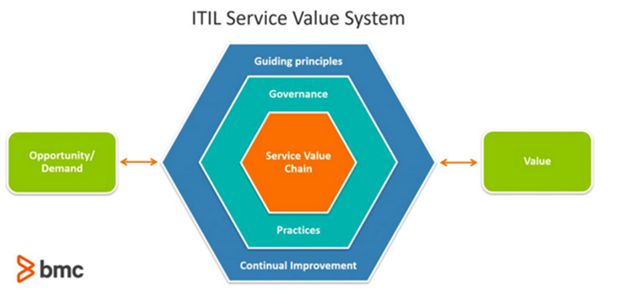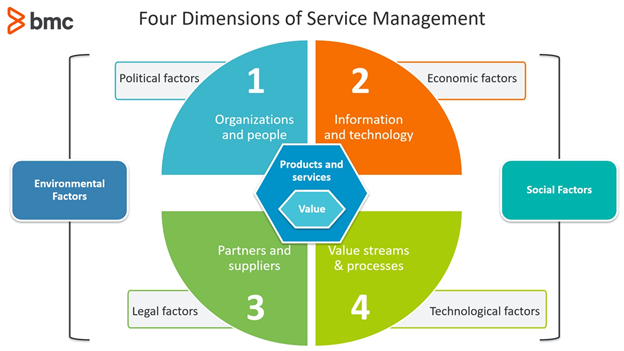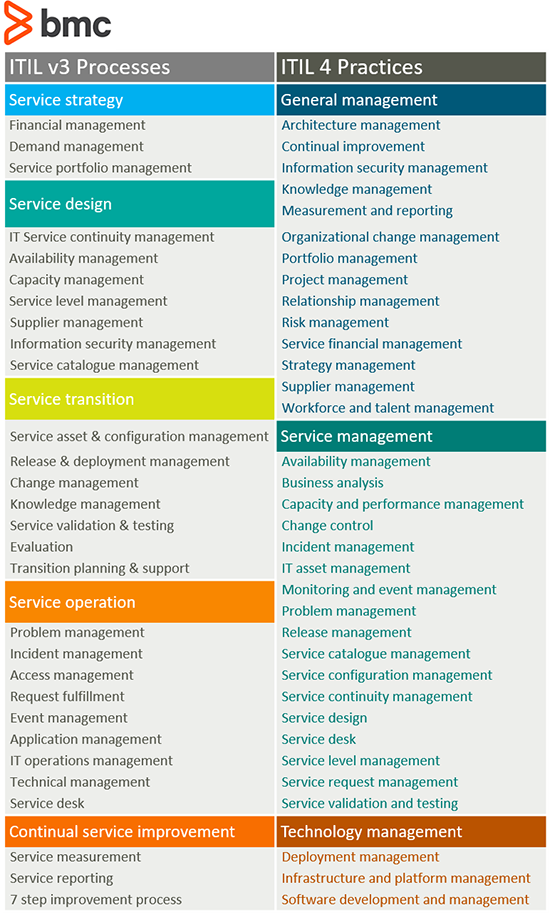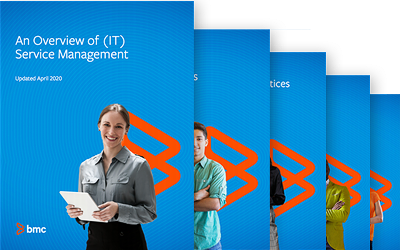IT service management is prevalent in larger organizations. Still, other organizations considering whether to implement ITSM haven’t taken the plunge yet. Many of these same shops have created their own do-it-yourself service delivery models, and they don’t see the value in switching to a formal ITSM environment yet. After all, why change something that’s not broken?
In this article, I’ll aim to answer this question: “Why bother implementing ITSM if what you have is working fine?” I’ll do this by highlighting three specific benefits most shops experience when implementing ITSM inside an ITIL® 4 framework.
Download Now: ITIL 4 Best Practice e-Books
These all-new for 2020 ITIL e-books highlight important elements of ITIL 4 best practices. Quickly understand key changes and actionable concepts, written by ITIL 4 contributors.
Note: This post focuses on the benefits you receive when implementing ITSM with ITIL 4, which debuted in 2019. The prior ITIL v3 standard has a different focus and provides different benefits, which we’ve discussed previously.
Three key benefits of following ITIL 4 for ITSM
These are the three biggest benefits most organizations realize when implementing an ITSM environment using the ITIL 4 framework:
- You’ll focus on co-creating business value, not just IT service delivery.
- You’ll have the ability to integrate other software development and IT operations ideologies into an ITSM environment.
- You’ll approach your ITSM holistically, with practices that your entire company can use, both inside and beyond direct IT service delivery.
Now we’ll look at each benefit in more detail.
#1. ITSM and ITIL 4 focus on co-creating business value
ITIL 4 and ITSM provide a framework to create holistic solutions for your digital initiatives—way beyond what you’d experience with a DIY service management solution that may have been created in a previous decade.
ITIL v3 focused on IT services: creating, deploying, delivering, improving, and retiring services in line with the Service Lifecycle. In contrast, ITIL 4 focuses on co-creating value across your entire organization. Value is co-created by everyone involved in bringing a service or product to your end customers.
To co-create value, your company should start with the two overarching concepts of ITIL 4:
- The ITIL 4 Service Value System encompasses and enhances the ITIL v3 service lifecycle in many of its components—especially in its Service Value Chain (SVC), Practices, and Continual Improvements components. (See Figure 1, below.)
- The Four Dimensions of Service Management go beyond service delivery to incorporate many aspects of service management, including the organization, partners, and suppliers that contribute to value co-creation for the customer, along with the IT department. (See Figure 2, below.) In short, the four dimensions are:
- Organizations and people: The people, culture, and skills inside the organization that enable value co-creation
- Information and technology: Technologies, information, and knowledge needed for service management
- Value streams and processes. The method and ways we turn customer demand into a product or service
- Partners and suppliers. Partnerships with vendors and outside contractors for products and services we cannot or do not want to provide ourselves

Figure 1. The Service Value System (SVS) is one of two central concepts underlying value co-creation in ITIL 4.

Figure 2. The Four Dimensions of Service Management is the second foundational concept for ITIL 4 value co-creation.
Together, the SVS and the Four Dimensions provide a framework for how your company’s activities, components, and resources of an organization work together to co-create value for the organization:
#2. ITIL 4 offers advice for integrating ITSM with other ITOps and development ideologies
Rather than being viewed as a single ITSM framework above all others, ITIL 4 has taken a more flexible approach. It incorporates ideas and concepts from DevOps, Agile, and Lean that might inform your development and IT operations strategies. As these ideologies are becoming the norm for software development and ITOps, ITIL 4 is becoming a flexible framework that can embrace and enhance other ideologies and provide guidance on their use.
#3. ITIL 4 is holistic, favoring practices over processes
ITIL v3 focused on processes, while ITIL 4 focuses on practices. What’s the difference? Prior to ITIL 4, a process was an activity flow that also provided advice and information about what was needed for that function. ITIL v3 process flows included components like incident management, problem management, and IT operations management.
In ITIL 4, processes are encompassed within practices. A practice incorporates many resources, including the four dimensions model, the processes that were previously designated in ITIL v3, guiding principles, your organization’s governance considerations, and continual improvement—almost everything you use to achieve digital transformation.
The table below shows the 29 processes listed for ITIL v3 compared with the 34 practices listed for ITIL 4. Notice that ITIL v3 processes all center around IT services (Service strategy, Service design, Service transition, etc.) while ITIL 4 practices center around ITSM management (General management, Service management, and Technology management).

ITIL 4 practices encourage organizations to think beyond using IT service delivery as the only significant ITSM element. The ITIL framework is, as advertised, a holistic framework, that takes many elements into account to deliver value during an organization’s digital transformation. This holistic viewpoint is missing in older DIY or ITIL v3 service delivery models and is a valuable benefit when using ITIL 4 for implementing ITSM.
These are only three of the most valuable advantages in implementing ITSM and ITIL 4. Your organization can realize several additional advantages that can be realized with ITIL and ITSM.
Additional resources
For more information on IT service management, browse our ITIL 4 Guide, with 20+ articles on ITIL. Ready for the only end-to-end ITSM and ITOM platform for your company? Explore BMC Helix.






